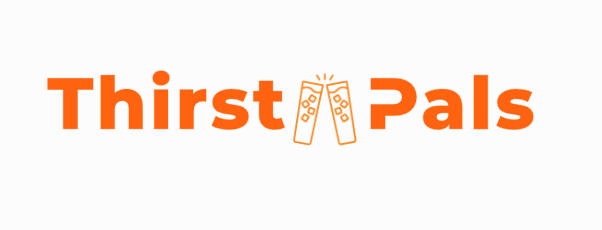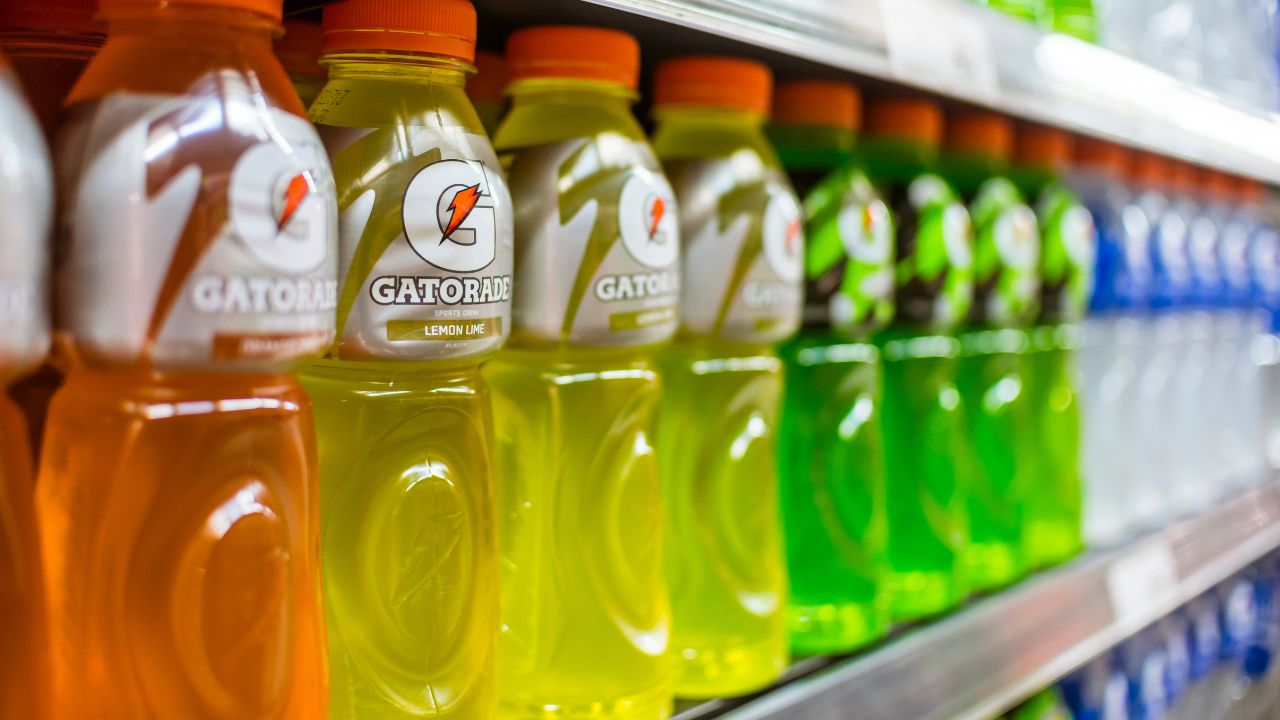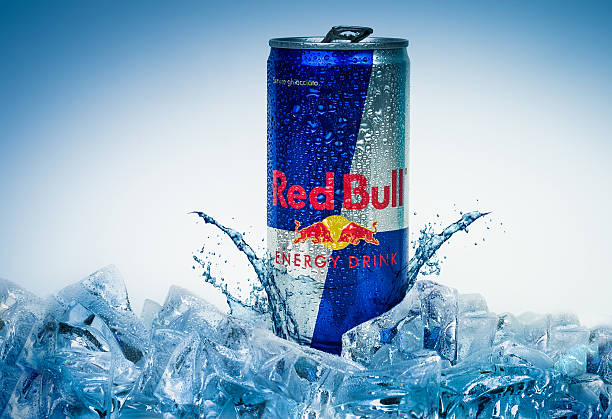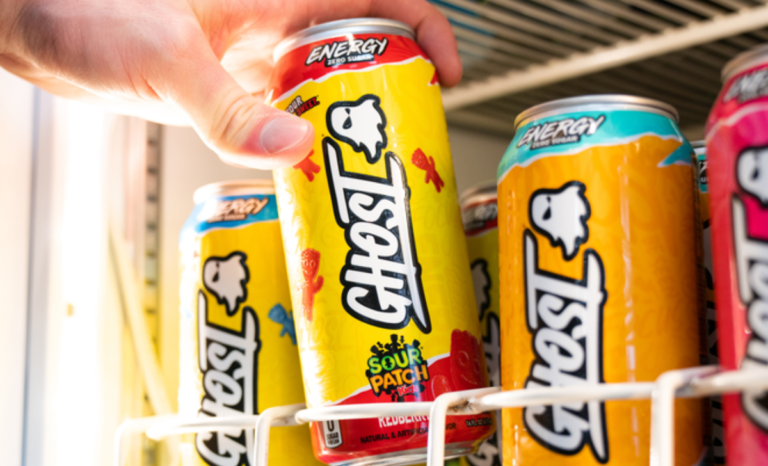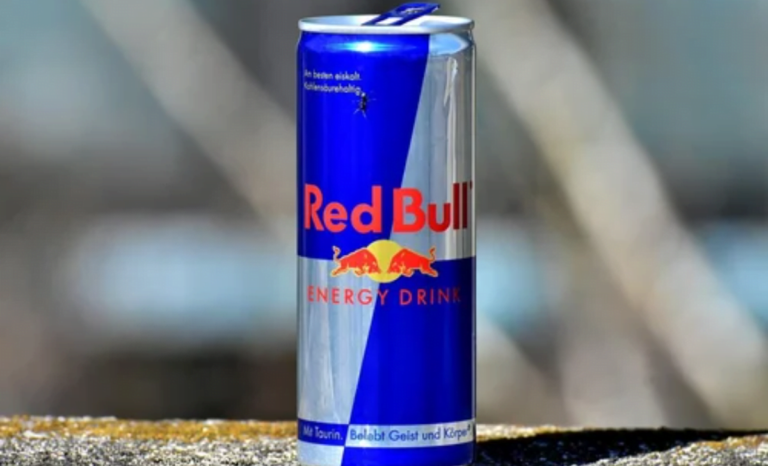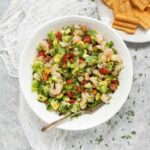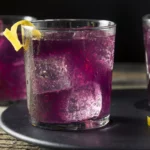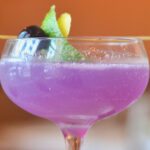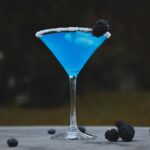Are you wondering Does Gatorade have Red dye 40 in it? Gatorade, a staple in the world of sports beverages, has long been favored by athletes and fitness enthusiasts for its hydrating qualities.
Yet, a growing concern among consumers revolves around the ingredients within this popular drink, particularly the presence of artificial coloring, specifically Red Dye 40.
So, Does Gatorade contain Red Dye 40?
Yes, certain Gatorade flavors like Fruit Punch, Cherry, and Strawberry contain Red Dye 40, a synthetic coloring.
However, Gatorade offers dye-free alternatives like Lemon-Lime and Orange for those seeking beverages without this particular dye. Always check the label for specific ingredients in each Gatorade flavor.
What is Red Dye 40?
Red Dye 40, also known by its scientific name Allura Red AC, is a synthetic food coloring that imparts a vivid red color to a variety of consumables.
This artificial dye belongs to the azo dye family, characterized by the presence of nitrogen-nitrogen double bonds in its molecular structure.
Widely used in the food and beverage industry, Red Dye 40 is a common ingredient found in a plethora of products, ranging from candies and cereals to beverages like Gatorade.
Common Uses in Food and Beverages
The versatility of Red Dye 40 lies in its stability and ability to produce a consistent and appealing red color in a wide range of products.
Its applications extend beyond enhancing the visual appeal of foods; the vibrant hue it provides is often associated with fruit flavors and is utilized to make products more visually enticing to consumers.
However, the extensive use of Red Dye 40 has not been without controversy. Questions have been raised about its safety and potential health implications, especially in relation to allergic reactions and hyperactivity, particularly in children.
Controversies Surrounding Red Dye 40
Despite regulatory approval from agencies such as the U.S. Food and Drug Administration (FDA) and the European Food Safety Authority (EFSA), Red Dye 40 has been the subject of ongoing scrutiny.
Some studies have suggested a potential link between the consumption of synthetic dyes, including Red Dye 40, and adverse health effects.
Allergies and sensitivities to such additives have been documented, prompting concerns among certain segments of the population.
Some studies have found that Red dye 40 contains benzene, which is a cancer-causing substance. However, red 40 has really small amount of benzene, and doesn’t pose serious health problems.
The debate surrounding the safety of artificial food colorings has led to increased consumer awareness, with individuals seeking to understand the nature of these additives and their potential impact on health.
As a result, Red Dye 40 has become a focal point of discussions regarding the overall safety and nutritional quality of processed foods and beverages.
Does Gatorade have Red Dye 40?
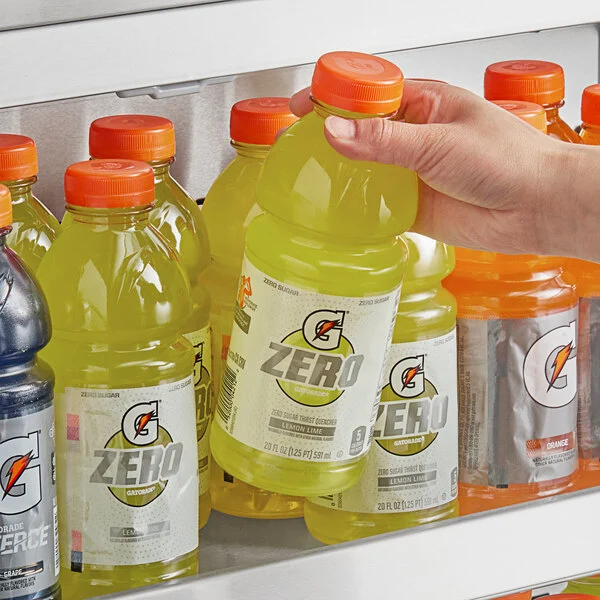
Gatorade, the popular sports drink, contains Red Dye 40, a synthetic coloring. This ingredient gives certain Gatorade flavors their distinct red color.
The use of Red Dye 40 is a deliberate choice by the makers of Gatorade for aesthetic reasons, aiming to create visually appealing beverages.
Which Gatorade Contains Red Dye 40
Let’s explore Gatorade flavors that use Red Dye 40, like Fruit Punch, Cherry, and Strawberry. The presence of Red Dye 40 gives these drinks their distinctive red color.
1. Fruit Punch
Fruit Punch Gatorade, with its bold and fruity flavor, contains Red Dye 40 to impart the visually appealing red color. This classic flavor is a favorite among those who enjoy a burst of sweetness during their hydration.
2. Cherry
Gatorade Cherry, with its rich and indulgent taste, relies on Red Dye 40 for its deep red coloring. This choice enhances the overall sensory experience for consumers who savor the boldness of cherry-flavored sports drinks.
3. Strawberry
Strawberry Gatorade, known for its refreshing and slightly sweet profile, also incorporates Red Dye 40 to achieve the vibrant red shade. This option caters to those who appreciate the essence of strawberries in their hydrating beverage.
Understanding which Gatorade flavors contain Red Dye 40 provides clarity for consumers who prefer or need to avoid this particular synthetic coloring.
Which Gatorade is Dye-Free
Is red dye in all Gatorades? Well no. For those looking for Gatorade without synthetic coloring, options like Lemon-Lime, Orange, and Glacier Freeze provide a dye-free choice. These flavors achieve their colors naturally, without Red Dye 40.
1. Lemon-Lime
Gatorade Lemon-Lime achieves its bright color without the use of Red Dye 40. This classic flavor offers a crisp and citrusy taste, providing a refreshing option for those who prefer dye-free beverages.
2. Orange
Gatorade Orange, known for its zesty and invigorating flavor, skips the use of Red Dye 40. The natural orange hue is achieved through alternative methods, catering to consumers who enjoy a classic citrus experience without synthetic coloring.
3. Glacier Freeze
Glacier Freeze Gatorade, a popular choice for its cool and icy flavor, is also dye-free. The combination of blue and green hues in this drink is achieved through alternative colorings, appealing to those who prefer a visually distinctive yet dye-free option.
Discover more: When Did Gatorade Stop Using Glass Bottles
Does Orange Gatorade Have Red Dye 40?
No, Orange Gatorade does not contain Red Dye 40. The vibrant orange color of this Gatorade flavor is achieved through alternative colorings, ensuring a dye-free experience for consumers who enjoy the classic citrus taste.
Does Blue Gatorade Have Red Dye 40?
Yes, Blue Gatorade does contain Red Dye 40. The distinctive blue color of this Gatorade flavor is achieved, in part, through the use of Red Dye 40, adding a visual appeal to the beverage.
Does Lemon-Lime Gatorade Have Red Dye 40?
No, Lemon-Lime Gatorade does not contain Red Dye 40. The refreshing yellow-green hue of this Gatorade flavor is achieved without the use of Red Dye 40, offering a dye-free option for those who enjoy a citrusy taste.
So, is the Red dye in Gatorade bad for you?
While Red 40 is generally considered safe by regulatory bodies like the FDA and WHO, some studies have suggested potential links to:
Hyperactivity and ADHD in children: Some research suggests Red 40 may worsen hyperactive behavior in children with ADHD, though more studies are needed for conclusive evidence.
Allergies and sensitivities: Some individuals may experience allergic reactions to Red 40, including skin rashes, hives, and respiratory problems. Read more about Gatorade allergies.
Inflammatory bowel disease (IBD): A recent animal study suggests a potential link between Red 40 consumption and increased risk of IBD, but more research is needed to confirm these findings in humans.
Factors to Consider Regarding Red Dye 40 Side effects
- Amount of Gatorade consumed: The potential risks associated with Red 40 are likely dose-dependent. Occasional consumption of Gatorade likely poses minimal risk, while regular or excessive intake could increase potential health concerns.
- Overall diet: If your diet is already high in processed foods and added sugars, adding Gatorade with Red 40 may further contribute to potential health issues.
- Individual health: People with allergies, sensitivities, or pre-existing health conditions may be more susceptible to adverse effects from Red 40.
Other Dyes in Gatorade and Concerns
Beyond the familiar realm of Red Dye 40 in Gatorade, a spectrum of other dyes contributes to the vibrant array of colors found in various flavors.
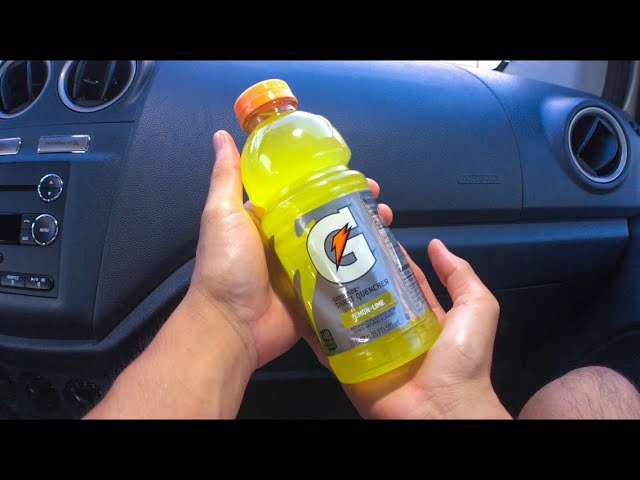
These dyes, including Brilliant Blue, Yellow 5, Yellow 6, Caramel Color, and Green 3, play a crucial role in shaping the visual identity of Gatorade. However, it’s essential to delve into each dye’s specifics and potential concerns.
Brilliant Blue (Blue 1)
Gatorade Blue flavors, like the popular Blue Raspberry, utilize Brilliant Blue (Blue 1) to achieve their distinctive color.
While approved by regulatory bodies, some studies suggest potential concerns related to allergic reactions. Consumers with known sensitivities should exercise caution and read labels carefully.
Yellow 5 (Tartrazine)
Yellow 5 is found in Gatorade flavors with a yellow hue, such as Pineapple. Despite regulatory approval, Yellow 5 has been linked to hypersensitivity reactions in some individuals. Those with sensitivities may opt for alternative flavors to avoid potential adverse effects.
Yellow 6 (Sunset Yellow)
Gatorade’s Mango Extremo, boasting a vibrant yellow-orange shade, contains Yellow 6 (Sunset Yellow). Concerns have been raised about its potential impact on behavior, particularly in children. While deemed safe by regulatory agencies, cautious consumption is advised.
Caramel Color (Class IV)
Certain Gatorade flavors, like Cool Blue and Glacier Cherry, contain Caramel Color (Class IV). While generally considered safe, there have been discussions about potential byproducts formed during its production.
For those with specific concerns, exploring Gatorade options without this coloring may be a prudent choice.
Green 3 (Fast Green FCF)
Green 3 is found in Gatorade flavors with a green hue, such as Green Apple. Regulatory agencies have approved its use, but discussions persist about potential health effects.
As with any food coloring, individuals with sensitivities should be cautious and consider alternatives.
Alternatives to Gatorade with Red Dye 40
If you prefer to steer clear of synthetic coloring like Red Dye 40, the market offers a range of alternatives to Gatorade. Here are some popular options that provide hydration without the inclusion of this particular dye:
1. Other Sports Drinks
Powerade: A prominent competitor to Gatorade, Powerade offers various flavors without Red Dye 40. Athletes and fitness enthusiasts often turn to Powerade for an alternative hydrating experience.
BODYARMOR: Marketed as a premium sports drink, BODYARMOR distinguishes itself by using natural colors and flavors. It provides a spectrum of options for those seeking a dye-free alternative.
Propel: Positioned as a fitness water with added electrolytes, Propel is another alternative for individuals looking to avoid artificial colorings. Its emphasis on hydration without synthetic dyes caters to health-conscious consumers. Read Gatorade Vs Propel.
2. Homemade Alternatives
Crafting your own electrolyte beverages at home allows complete control over ingredients. This option not only avoids Red Dye 40 but also enables you to tailor flavors to your liking.
Consider using ingredients like water, electrolyte sources, natural flavorings (citrus fruits, berries), and sweeteners if desired (honey, agave nectar).
Choosing alternatives to Gatorade with Red Dye 40 ensures that you can maintain your hydration routine while aligning with your preferences for natural ingredients.
Whether opting for commercially available sports drinks or concocting your own at home, these alternatives provide a dye-free approach to staying refreshed during physical activities.
Also check out :
Conclusion: Does Gatorade Have Red Dye 40?
Does Gatorade have Red dye 40? Simple answer is Yes, certain Gatorade flavors, such as Fruit Punch, Cherry, and Strawberry, contain Red Dye 40. However, there are also dye-free alternatives like Lemon-Lime, Orange, and Glacier Freeze.
Understanding the presence of Red Dye 40 in specific flavors allows consumers to make informed choices based on personal preferences and potential health considerations.
Whether embracing the vibrant reds or opting for a dye-free experience, Gatorade caters to a spectrum of tastes in the world of sports beverages.
FAQS
Does All Gatorade Have Red Dye 40?
Not all Gatorade flavors contain Red Dye 40. Specific varieties, like Fruit Punch, Cherry, and Strawberry, utilize this synthetic coloring for their vibrant red hues.
However, Gatorade offers a range of dye-free options, such as Lemon-Lime and Orange, ensuring alternatives for those who prefer beverages without Red Dye 40.
What Does Red 40 Do to Your Body?
While generally considered safe by regulatory bodies, Red 40 has drawn scrutiny for its potential link to hyperactivity in children, allergic reactions, and even inflammatory bowel disease, often with dose-dependent effects.
Some studies suggest minimal risks from occasional consumption, but regular or excessive intake might raise concerns.
How Much Red Dye 40 Is in Gatorade?
The precise amount of Red Dye 40 in Gatorade varies by flavor. Specific options like Fruit Punch, Cherry, and Strawberry use this dye to achieve their red coloring.
To determine the exact quantity, individuals can refer to the product’s nutritional information and ingredient list provided on the packaging.
How Much Blue 1 Is in Gatorade?
Gatorade flavors that feature a blue hue, such as Blue Raspberry, typically contain Brilliant Blue (Blue 1). The exact quantity may vary by flavor, and consumers can find information about the presence of Blue 1 in Gatorade by checking the product’s ingredient list and nutritional information on the packaging.
What Does Red 40 Do to Your Stomach?
While Red Dye 40 is generally considered safe for consumption, some individuals may experience mild gastrointestinal discomfort, such as nausea or upset stomach, as a rare side effect.
It’s crucial to consult with a healthcare professional if persistent or severe symptoms occur. Individuals with known sensitivities to synthetic dyes might opt for Gatorade flavors without Red Dye 40 to avoid potential stomach-related
